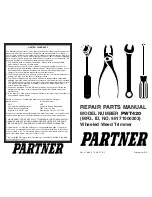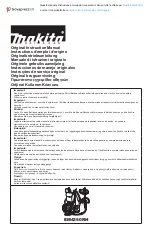
EN
G
LI
S
H
15
1
3
4
2
Pull sawing (recommended)
Always use the bottom side of the blade for cutting
branches. This technique involves sawing branches
from the top to the bottom. The saw chain pulls
the saw forwards, away from the user. When pull
sawing, the user has much more control over the saw
and can better avoid kickbacks.
Push sawing
This technique involves sawing the branch from
the bottom to the top. The saw chain thus pulls
the saw back towards the user. This means that
the user has to equalise the rearward force of the saw
chain to compensate. If the force is not equalised,
there is a danger of the guide bar being pulled too
far backwards so that just the tip of the bar is in
contact with the branch. This can cause kickbacks or
unexpected bar movement.
Lopping off branches
When sawing thinner branches, it is usually
sufficient to employ the pull sawing technique.
When sawing thicker branches, use the following
technique:
1. Make the first cut from below, about 15–20 cm
from the tree trunk. Cut about 1/3 of the way
through the branch.
2. Make the second cut about 5–10 cm outside
the first cut. Cut from above and cut all
the way through the branch.
3. Place the third cut as close to the tree trunk
as possible. Cut about 1/3 of the way through
the branch. Saw from the bottom.
4. Make the fourth cut as close the tree trunk
as possible and cut all the way through
the branch. Saw from the top.
















































